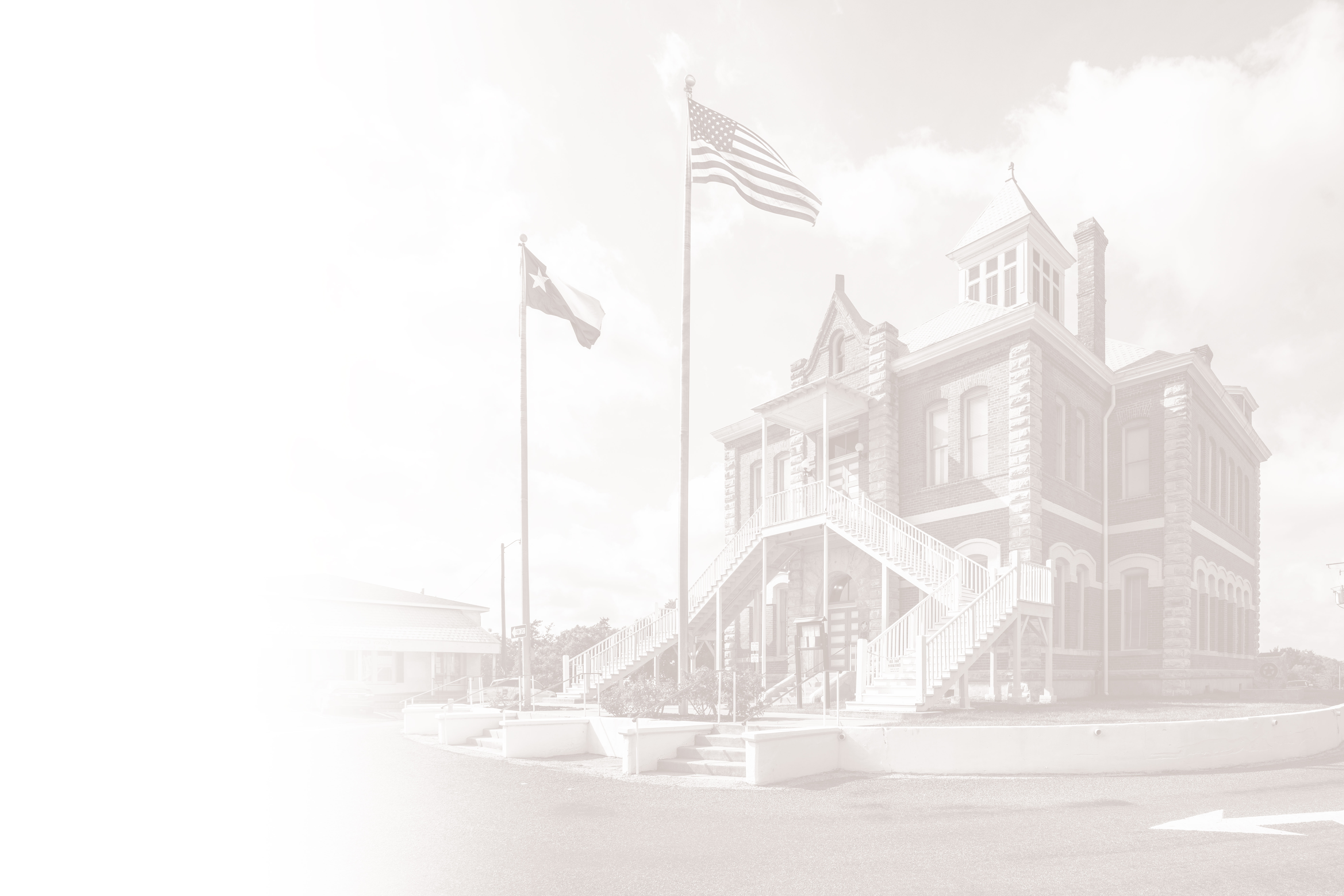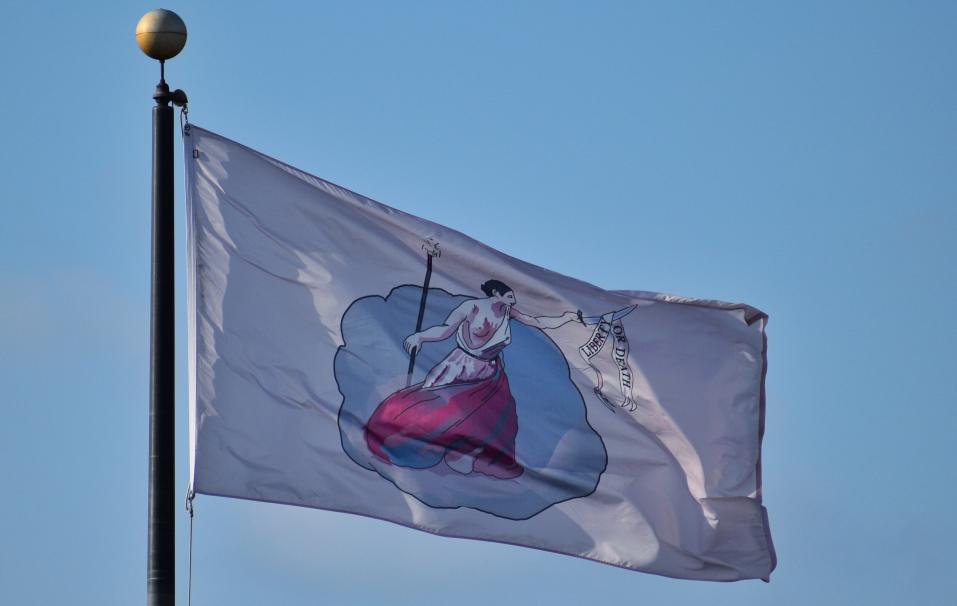Lots of places in Texas fly six flags, but the six flags flying in front of the San Jacinto Monument are unique. Instead of the traditional six flags of Texas, we fly six flags that represent key sites from Texas’ struggle for independence.
Texas won its independence at San Jacinto, but the battle didn’t happen in a vacuum. These six flags represent events and locations that were instrumental to that ultimate victory. Without the spark at Gonzales, would the Revolution have started when it did, and without the tragedies at the Alamo and Goliad, would men have been motivated to join Houston’s army?
Nor was the Texas Revolution a strictly military affair. Without the Consultation at San Felipe de Austin and the Convention of 1836 at Washington-on-the-Brazos, the Battle of San Jacinto would have been angry settlers rebelling against their federal government, not a new nation trying to prove itself.
Some of these flags will be familiar to any Texan, while others are probably new to most visitors. However, they were all real flags (or flag proposals) associated with the Texas Revolution. The Texas Revolution sites have always been inextricably linked. Now that shared history can be seen flying in the breeze above the battlefield.
Here’s a little more about each of the six flags, and the six sites they represent.
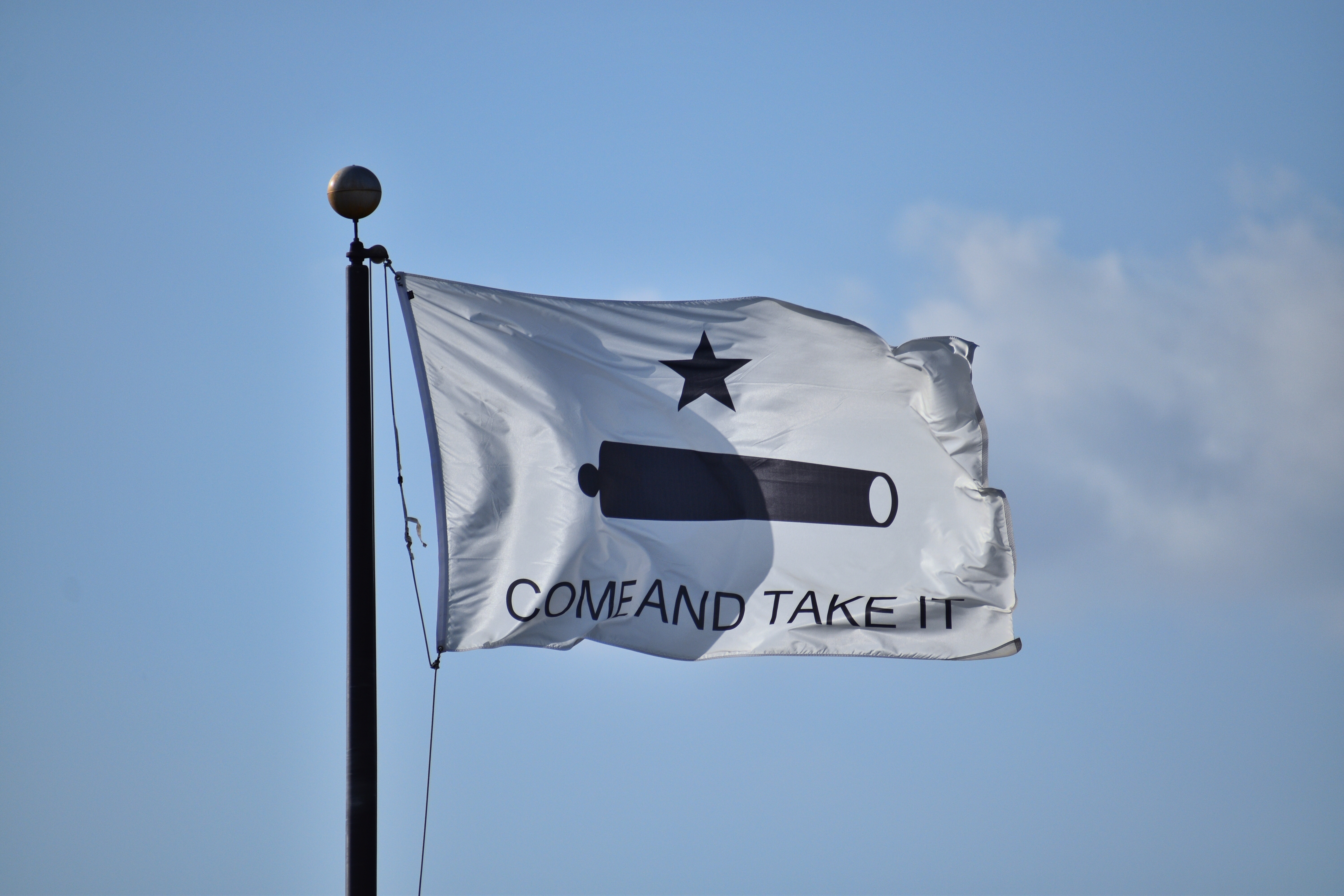
Come and Take It Flag – Gonzales
The Come and Take It flag is the best known of the Texas Revolution flags. It was designed and painted by the women of Gonzales in October 1835 to celebrates the famous cannon that sparked the Battle of Gonzales. Contrary to what many paintings of the Battle of Gonzales suggest, the flag was made after the battle, not for it. Stephen F. Austin's volunteer army carried the flag with them as they marched towards Bexar, but according to at least one member of the campaign, both the cannon and the flag were abandoned on the journey.
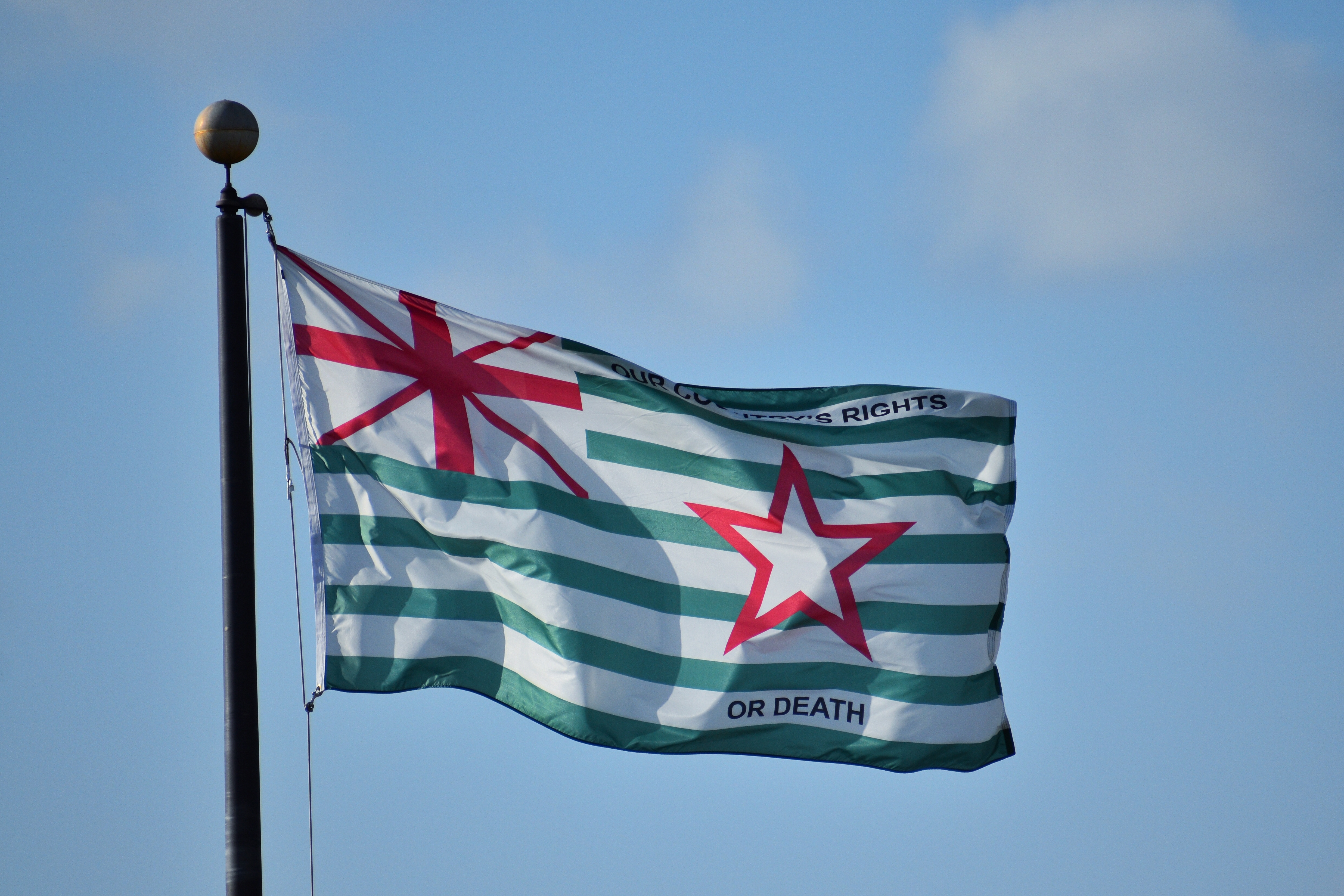
Austin’s Flag – San Felipe de Austin
In November 1835, the provisional Texas government sent Stephen F. Austin to the United States to raise support and supplies for the Revolution. The following January, while in New Orleans, he wrote to Gail Borden in San Felipe de Austin with a proposal for a new national flag for Texas.
Austin’s flag was highly symbolic. According to his letter, “The shape of the English Jack in the corner indicates the origin of the North American people. The stripes indicate the immediate descent of the most of the Texians. The star is Texas-the tri colour is Mexican.”
The flag represented a real change in heart for Austin. He had long been the voice of moderation in Texas and a supporter of separate statehood and the restoration of the Constitution of 1824. However, in the same letter, he also wrote, “I shall preach independence all over the U. S. wherever I go.”
Austin’s proposed flag was never made, but his original sketch of the flag is kept at the Dolph Briscoe Center for American History at the University of Texas at Austin.

Dodson’s Lone Star Flag – Washington-on-the-Brazos
Texas’s first lone star flag, the Dodson Flag, was made by Sarah Dodson in September 1835 for the Harrisburg militia company, where her husband served as first lieutenant. Lt. Dodson later wrote that “the single star was like Texas, alone in her opposition to the autocratic government that had been established in Mexico.”
When the Harrisburg militia company arrived in Gonzales shortly after the battle, Stephen F. Austin worried that the flag was too revolutionary, and he asked that it not be flown in case the government commander at Bexar saw it and thought it was treasonous. However, he later relented, and the company marched to Bexar under their flag.
In March 1836, it was one of two flags that flew over Independence Hall when the Texas Declaration of Independence was signed.
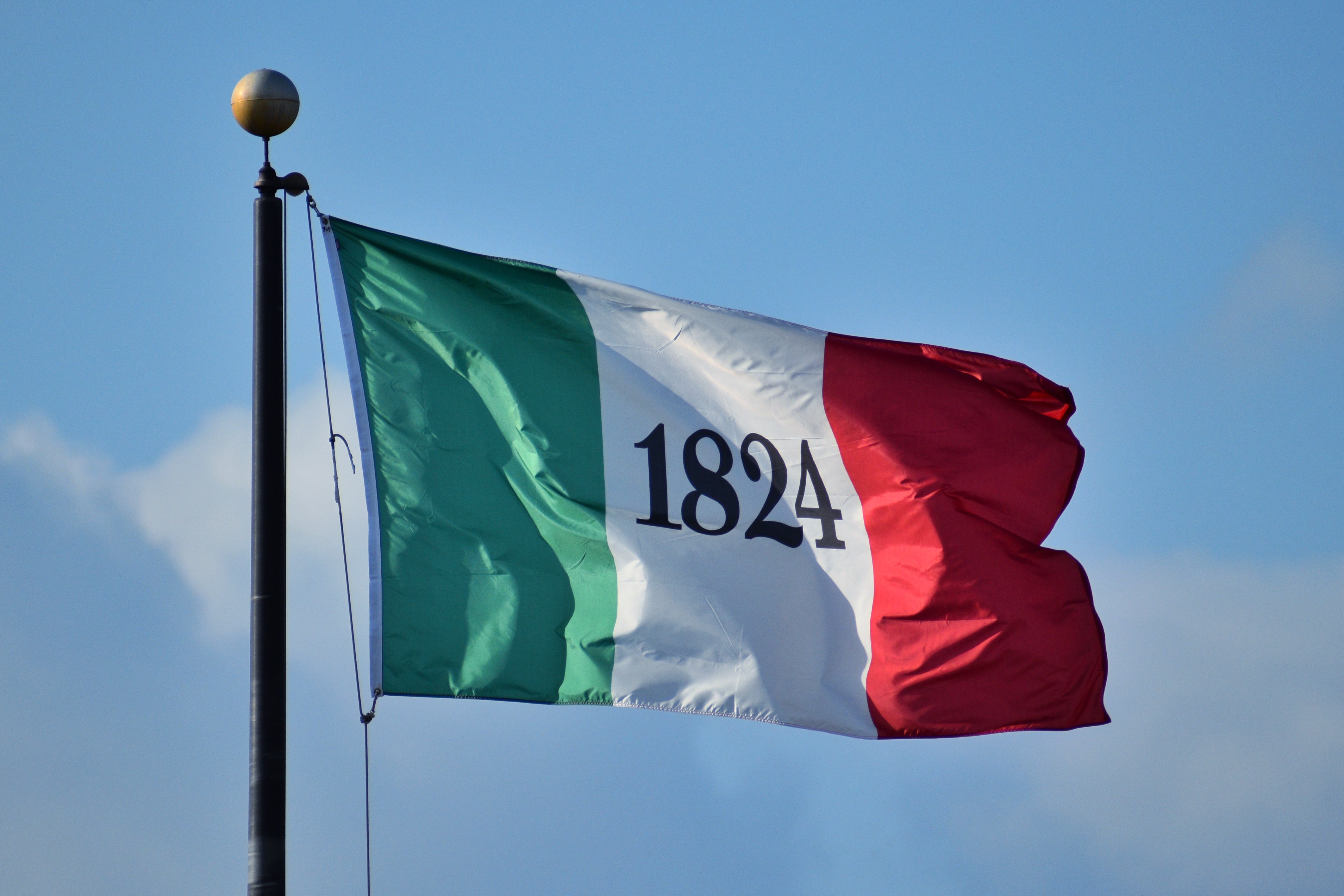
1824 Flag – Alamo
The 1824 flag was designed by Captain Philip Dimmitt in October 1835. Dimmitt wrote to Stephen F. Austin on October 27, 1835, saying, “I have had a flag made—the colours, and their arrangement the same as the old one [Mexican national flag]—with the words and figures, ‘Constitution of 1824,’ displayed on the white, in the centre.”
During the early days of the Texas Revolution, many Texians supported the restoration of the Constitution and separate statehood instead of complete independence from Mexico. The 1824 flag represented that initial loyalty.
Unlike the other Texas Revolution flags, which were made for a specific militia company or event and there was never more than one of, the 1824 flag spread across Texas. There are accounts of the 1824 flag being flown throughout Texas. Hermann Ehrenberg of the First New Orleans Grays wrote that at the welcome banquet in Nacogdoches, the centerpiece was a huge black bear holding the “flag of the constitution of 1824” in its teeth.
People have long assumed that the 1824 flag was the flag that flew at the Alamo. The idea was that until Texas officially declared independence, they were fighting for the restoration of the Constitution of 1824. However, it wasn’t until histories of the Texas Revolution were being written in the 1850s and 1860s that the 1824 flag appeared in accounts of the siege. There are no contemporary sources that describe the 1824 flag at the Alamo, and modern historians have questioned how strongly Texians, especially William B. Travis, would have identified with the Federalist cause by late February.
There are two contemporary Mexican accounts of the Coahuila y Tejas flag being flown from the Alamo, but since most Texians were firmly in favor of separate statehood for Texas as a minimum, that also seems unlikely.
Ultimately, we’ll never know if the 1824 flag was the one Travis referenced when he wrote “our flag still waves proudly from the walls - I shall never surrender or retreat.” However, even if it wasn’t, it is still significant as the first legal flag in revolutionary Texas. In November 1835, the Consultation began to issue letters of marque and reprisal to privateers while they built a navy. For a privateer to be official, they had to fly under a recognized flag, but since Texas didn’t have an national flag yet, privateers flew the “flag of the Republic of the United States of Mexico, and shall have the figures 1, 8, 2, 4 cyphered in large Arabics on the white ground thereof.” This flag continued be used by Texian ships until after independence was officially declared.
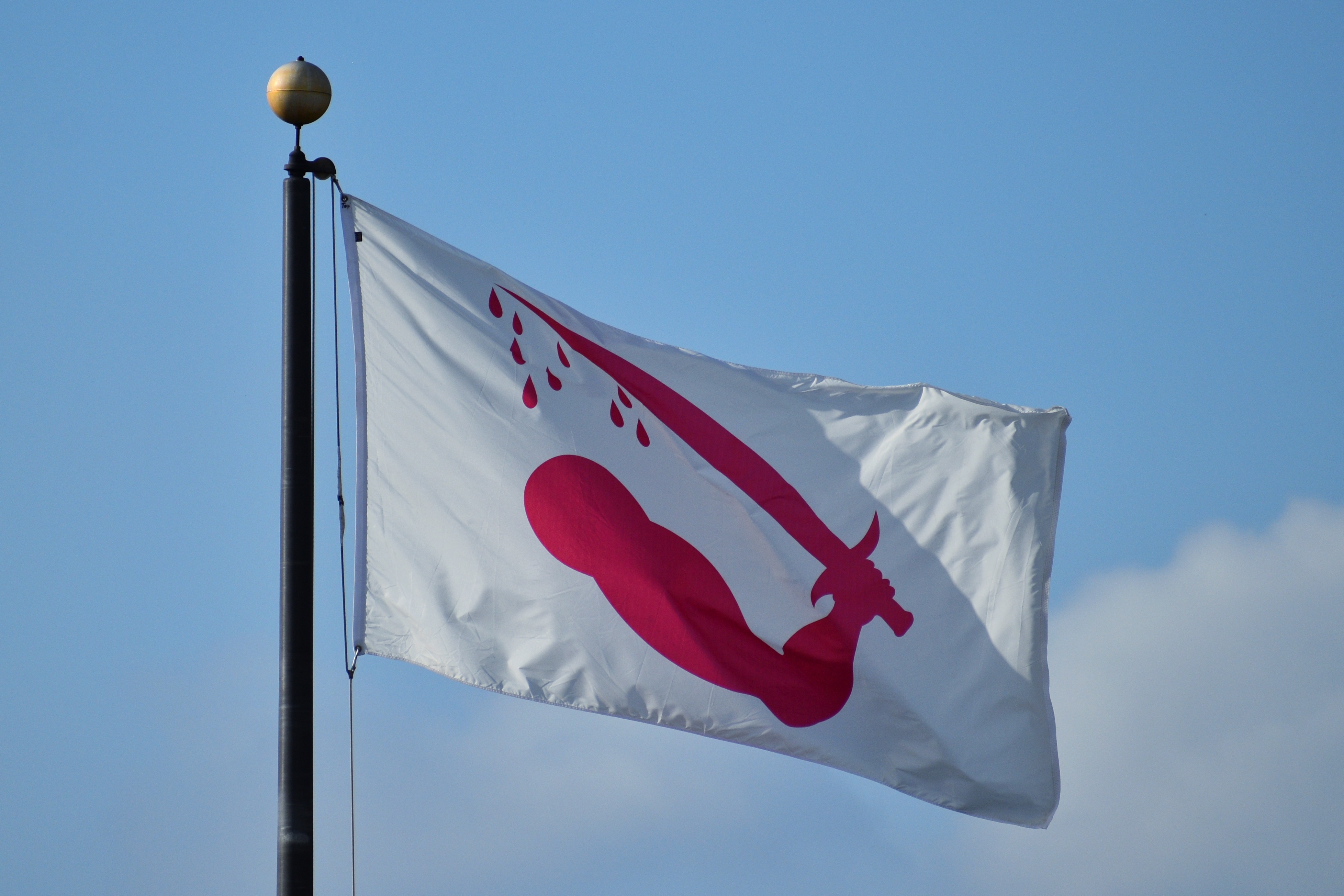
Bloody Arm Flag – Goliad
The dramatic Bloody Arm flag, which was designed by Captain Philip Dimmit, the same man who designed the 1824 flag two months earlier, was raised at the Presidio La Bahia in Goliad on December 20, 1835, in honor of the signing Goliad Declaration of Independence. This declaration, which stated that Texas was a "free, sovereign, and independent State," was signed two months before the General Convention officially declared independence at Washington-on-the-Brazos. The flag was permanently lowered on January 10, 1836, and was not present for either of the battles at Goliad.
The Bloody Arm flag represented a dramatic shift towards complete independence from Mexico, a position that was made permanent on March 2, 1836 when the Texas Declaration of Independence was signed. Along with the Dodson flag, the Bloody Arm flag flew over Independence Hall when the Declaration was signed.
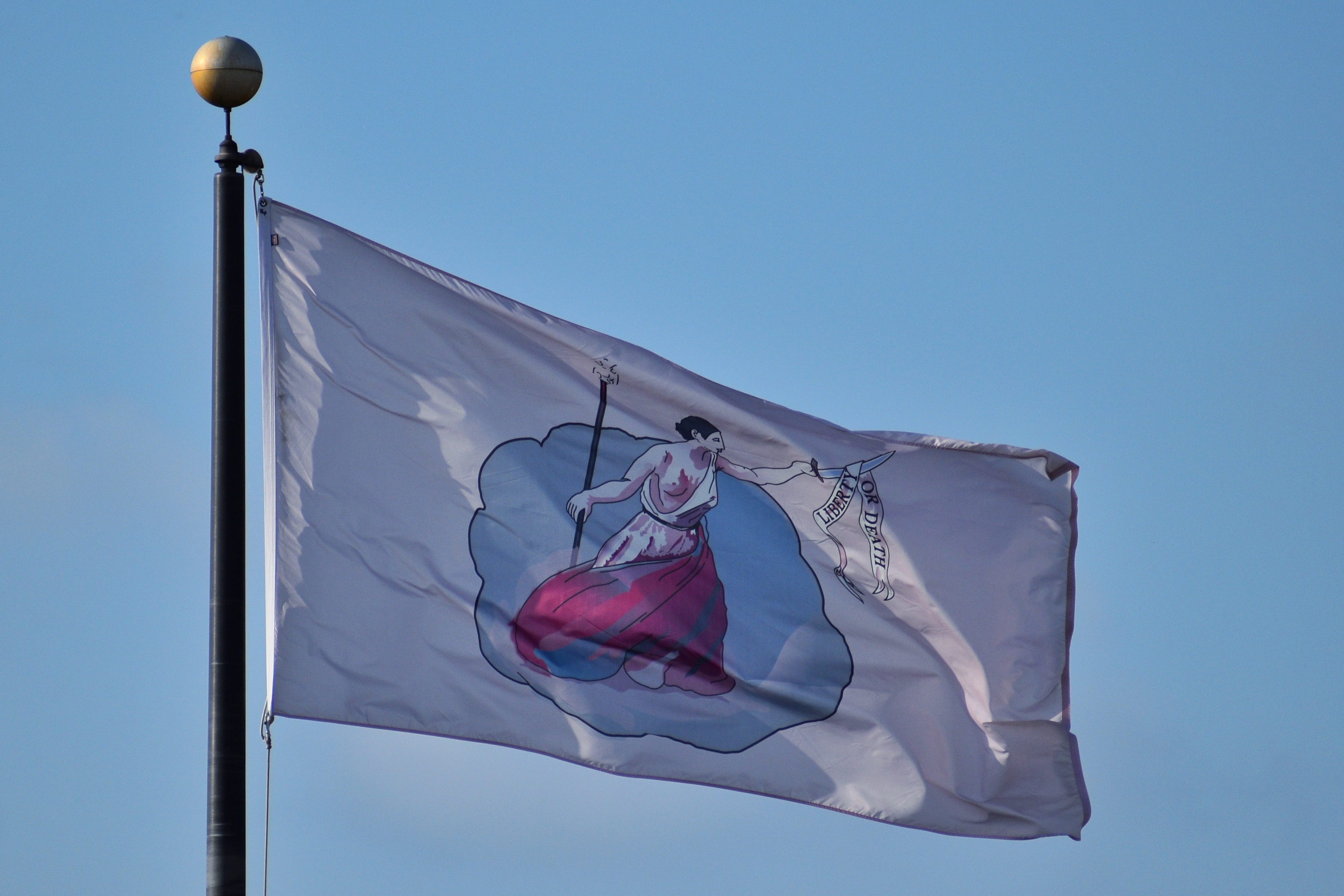
Liberty Flag – San Jacinto
The Liberty flag was the only confirmed Texian battle flag that flew at the Battle of San Jacinto. It was presented to the Newport Rifle Company by Catherine Sherman, the wife of Colonel Sidney Sherman, in late 1835, shortly before they left Kentucky for Texas. The bare-breasted woman holding sword painted on the center of the flag was based on the famous painting Liberty Leading the People, which depicts the French July Revolution.
Unlike the other five flags of the Texas Revolution, which have been lost to time or never produced, the original Liberty flag still exists. It was returned to Catherine Sherman after the Revolution and kept by her family until it was gifted to the State of Texas in 1933. It is currently on display at the Texas House of Representatives.
Of course, these aren’t all of the flags involved in the Texas Revolution. You can learn even more about Texas Revolution flags in this webinar with Cait Johnson, our interpretive specialist.
